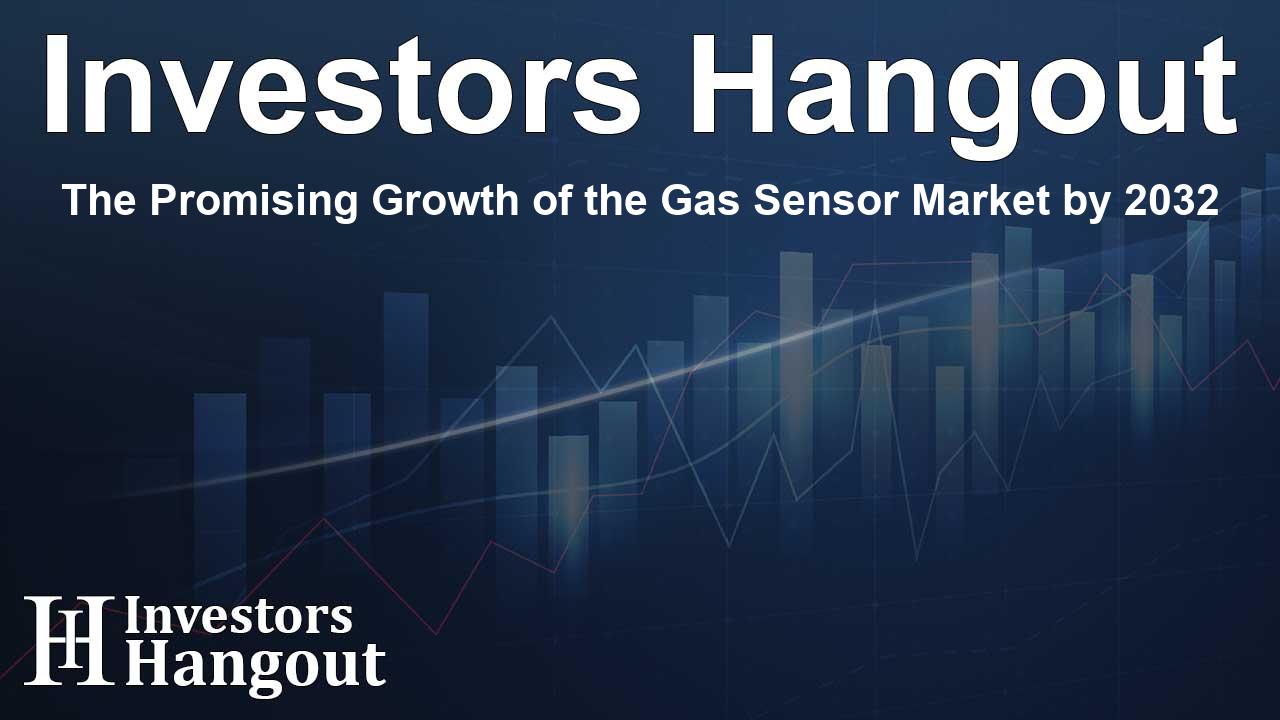The Promising Growth of the Gas Sensor Market by 2032

Gas Sensor Market Projection and Growth Factors
The gas sensor market is projected to see significant growth, expected to reach USD 3,137.4 million by 2032, up from USD 1,621.9 million in 2024. This remarkable increase represents a compound annual growth rate (CAGR) of 8.6% from 2024 to 2032. The major driving forces behind this upward trajectory are the increasing demand for autonomous vehicles and the necessity for efficient monitoring of air quality within these vehicles to ensure passenger safety.
Key Industries Driving the Gas Sensor Market
Gas sensors play an essential role across various industries, including oil and gas, chemicals, mining, and power generation. They are crucial for detecting hazardous gases, ensuring personnel safety, and monitoring emissions, which helps in preventing accidents and adhering to environmental regulations. With rigid health and safety standards implemented globally, industries are compelled to adopt gas sensors as part of their compliance measures.
Importance of Safety Regulations
Health and safety regulations, such as those enforced by OSHA and various EU directives, emphasize the critical need for gas sensors. This surge in regulatory measures has accelerated the adoption of these technologies, ensuring that work environments remain safe while meeting emissions monitoring standards.
Emergence of Gas Detectors as Market Leaders
Within the gas sensor market, gas detectors are set to hold the largest market share throughout the forecast period. Their design focuses on continuous monitoring of hazardous gases, such as carbon monoxide, methane, and hydrogen sulfide. As industries increasingly prioritize safety and regulatory compliance, the demand for gas detectors has risen significantly. They help in proactively identifying potential hazards that could lead to accidents.
Technological Advancements in Gas Detection
Advancements in technology, particularly wireless connectivity and Internet of Things (IoT) capabilities, have transformed the gas detector landscape. These modern systems enhance operational efficiency and allow for seamless monitoring without the need for complex wiring. With IoT integration, gas sensors can easily transmit critical data, offering real-time analytics to ensure a safe working environment.
Regional Market Insights
In terms of geographical distribution, North America is expected to hold a substantial market share in the gas sensor sector due to the presence of stringent pollution control measures and greater adoption of advanced HVAC systems. Governments across the region are actively promoting technologies that reduce emissions and improve air quality, further fuelling the market's growth.
Leading Players in the Gas Sensor Market
Several key players dominate the gas sensor market landscape, including Honeywell International Inc., MSA, Amphenol Corporation, Figaro Engineering Inc., and others. These companies are continually adopting growth strategies such as product launches and collaborations to strengthen their market positions.
Future Market Trends and Opportunities
Moving forward, several trends and opportunities will shape the gas sensor market. The incorporation of advanced technologies like cloud computing, big data analytics, and IoT will enhance gas sensor capabilities. This integration supports predictive maintenance and ensures higher levels of operational efficiency in various sectors.
Call to Action for Stakeholders
Industry stakeholders should consider leveraging these trends to gain a competitive advantage and meet the rising demands of the market. By innovating and adapting to changing technologies, companies can ensure they remain at the forefront of the gas sensor industry.
Frequently Asked Questions
What is the projected size of the gas sensor market by 2032?
The gas sensor market is expected to reach USD 3,137.4 million by 2032.
What are the main factors driving the growth of the gas sensor market?
The growth is largely driven by regulatory requirements, increasing demand for autonomous vehicles, and the rising emphasis on workplace safety.
Which industries are the largest consumers of gas sensors?
Key industries include oil and gas, chemicals, mining, and power generation, all of which utilize gas sensors for safety and compliance purposes.
How is technology impacting the gas sensor market?
Technological advancements such as IoT integration and wireless capabilities are enhancing the functionality of gas sensors, making them more efficient and easier to implement.
Who are the major players in the gas sensor industry?
Major players in the industry include Honeywell International Inc., MSA, and Amphenol Corporation, among others, who focus on innovative solutions and market expansions.
About Investors Hangout
Investors Hangout is a leading online stock forum for financial discussion and learning, offering a wide range of free tools and resources. It draws in traders of all levels, who exchange market knowledge, investigate trading tactics, and keep an eye on industry developments in real time. Featuring financial articles, stock message boards, quotes, charts, company profiles, and live news updates. Through cooperative learning and a wealth of informational resources, it helps users from novices creating their first portfolios to experts honing their techniques. Join Investors Hangout today: https://investorshangout.com/
Disclaimer: The content of this article is solely for general informational purposes only; it does not represent legal, financial, or investment advice. Investors Hangout does not offer financial advice; the author is not a licensed financial advisor. Consult a qualified advisor before making any financial or investment decisions based on this article. The author's interpretation of publicly available data shapes the opinions presented here; as a result, they should not be taken as advice to purchase, sell, or hold any securities mentioned or any other investments. The author does not guarantee the accuracy, completeness, or timeliness of any material, providing it "as is." Information and market conditions may change; past performance is not indicative of future outcomes. If any of the material offered here is inaccurate, please contact us for corrections.